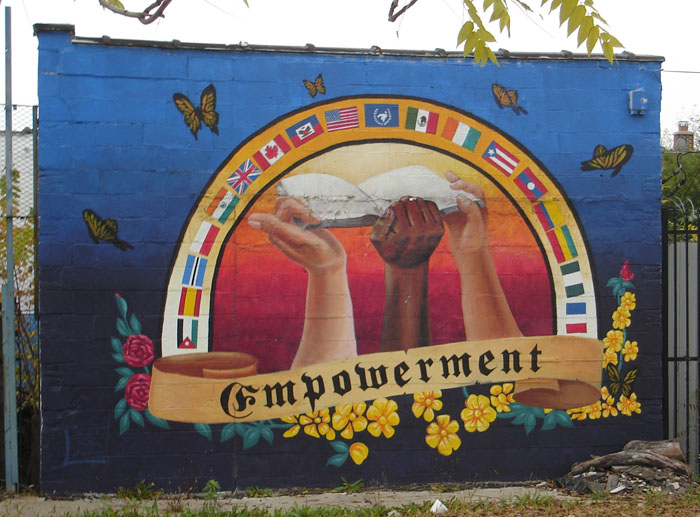Chan, Erin. "Embracing One Community: Metro Detroit's Latino Population expands,
extending beyond Mexico for a rich diversity in culture." The Detroit Free
Press, September 15 2006, B1-2.
Chan describes Mexicantown's new diversity combining Argentinian, Dominican, Puerto Rican, and Mexican cultures. All of these cultures combine to make up Southwest Detroit's Latino population. From 1990 to the present, the Mexican population in Detroit has more than doubled.
Rodriguez, Maria-Elena. "Mexicantown Community Development Corporation."
Mexicantown Community Development Corporation. n.d.
http://www.mexicantown.org/ (November 2, 2006).
This site describes the ongoing development of Mexicantown, established businesses and community resources, and plans for the future. This website is proof that Southwest Detroit is continuously improving the community and lifestyle of Latinos.
Poremba, David L. Detroit: A Motor City History Vol. 1. Charleston, SC: Arcadia
Publishing, 2003.
Poremba describes Detroit's economic and industrial power of the past and how it changed the strength of the US. It explains the economy established in Detroit before the influx of Latinos to the region.
Southwest Detroit Business Association. 2006. Southwest Detroit Business
Association. http://www.southwestdetroit.com/index.html (accessed
November 2, 2006).
This website shows much information on the buidling developments available to people in Detroit. They provide resources available for residents to open or improve a business. Since this program began, Latinos have increased the number of self-employed businesses.
Sugrue, Thomas. The Origins of the Urban Crisis: Race & Inequality in Postwar
Detroit. Princeton, NJ: Princeton University Press, 1996.
The economy of Detroit began to fall after World War II. During this period, there were also many race problems between the different groups. Minorities experienced many inequalities in this period and the city is currently working on eliminating race inequalities.
Murray, Dr. Vincent J. 2006. Welcome to Bagley Housing Association.
http://www.bagleyhousing.com (accessed November 30, 2006).
The Bagley Housing Association has provided improvement for Detroit housing and the state of the city. They are a non-proft organization that provides homes for lower income families. Other efforts of the BHA include promoting job creation and building improvements. Rebuilding schools is another focus of the BHA.
Tobocman, Steve. 2005. Rebuilding Detroit: Community-Centered. The Michigan Daily.
http://media.www.michigandaily.com/media/storage/paper851/news/2005
/11/17/TheStatement/Rebuilding.Detroit.CommunityCentered1433079.shtml?
sourcedomain=www.michigandaily.com&MIIHost=media.college
publisher.com (accessed November 30, 2006).
This website gives information on how Detroit has been rebuilt by all member of society. The University of Michigan School of Social Work students worked with local residents of the city to develop various programs for Detroit residents.
Aguilar, Louis. 2000. Barrio Boom. Metro Times Detroit.
http://metrotimes.com/20/25/Features/culBarrio.htm (accessed December 5,
2006).
This features the lives of two immigrants who recently came to Detroit. They are Latino immigrants who have found their place in Detroit and they enjoy the city. Many Latinos have immigrated to Detroit for varying reasons.
 Photograph taken by Heather Dougherty
Photograph taken by Heather Dougherty  Photograph taken by Heather Dougherty
Photograph taken by Heather Dougherty